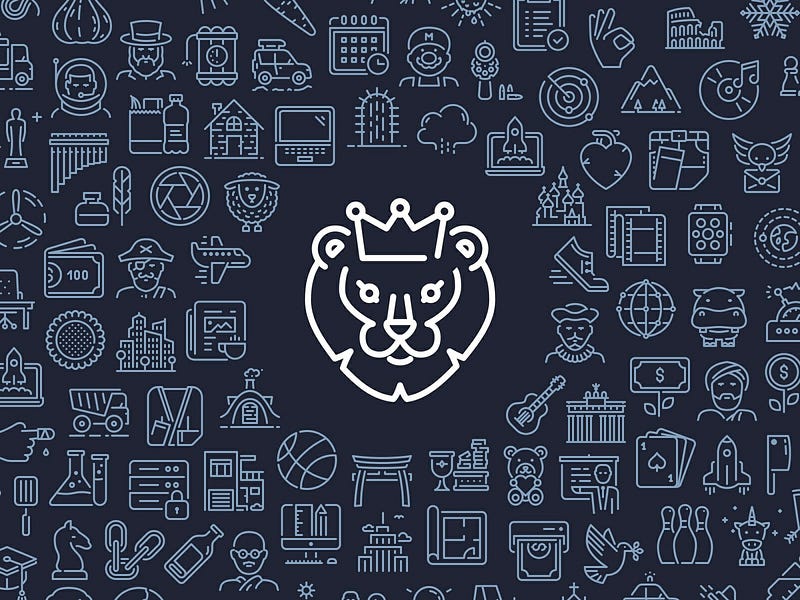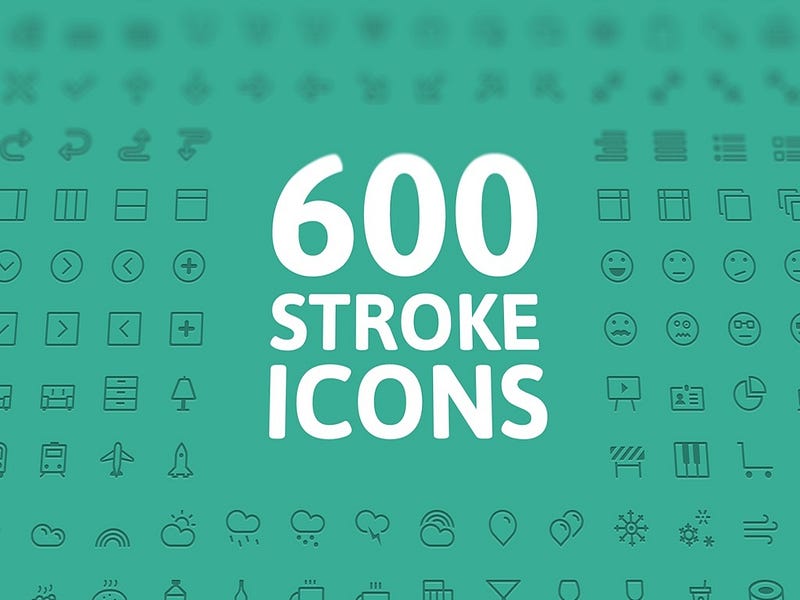PixelBazaar. Crafting icons at the micro level.

Zlatko Najdenovski is a UX/UI designer, known for his pixel-perfect icons. Today, he’ll tell us about his passion for icons design AND he’ll share some insights on how to provide real value to customers.
Zlatko, take us back to how it began. What lead you to designing icons?
I’m primarily a UI/UX designer and icons design was something that came out from a set of circumstances. While I was working as a product designer back in 2012, I noticed that the company I was working for might either go bankrupt or drastically change its course.
This led me to creating a backup plan. I wanted to build some passive income so that my transition from full-time to freelance would go smoothly. I chose to design icons as a means to achieve that.
I remember seeing many Dribbble shots with nicely-polished icons that probably gave the first push. I went for icons out of practicality, not because I wanted to chase a career – the passion and dedication came out spontaneously. It just happened to fit perfectly with my pursuit of perfection on a micro level.
Tell us a bit more about your love for detail. Why pixels?
I’ve always been inspired to express creativity on a micro level. 20 years ago it was building a paper city with tiny paper-citizens. A decade ago it was composing music while paying attention to every note and their perfect harmonic inter-relations. Now it is icons design.
Essentially, it’s still the same urge — to go as deep as the senses allow, or in this case, as deep as technology allows. The limitation in the latter is the pixel. You can’t go beyond it. And it’s all because of a need to seek perfection through creativity.
What does your creative process look like? Describe a working day in the life of Zlatko.
I go with the flow. There are periods where I don’t have client projects and I can fully dedicate myself to designing an icon-set or perfecting an existing one. And then there are periods when icon sales go well, and I can focus on clients’ projects.
[thrive_leads id=’1958′]Sometimes I work systematically, sometimes it’s pure inspiration and experimentation. I find beauty in both, but balance is the key. A systematic approach gives me more insights — I think about all the aspects of the end result. From the theme and style of the icon-set, to the target market and product description etc.
How do you make sure your reach your audience and your work gets noticed?
I’ve never explicitly devoted much time for marketing. All I do is follow the target audience, the trends and the competitors. From that I draw conclusions about what kind of icons I should focus on.
I figure out what value the customer really needs. Also, this allows me to find the right pricing model.
For instance, for my last icon-set LineKing, I challenged myself to craft 1000 unique icons without any repetition. This idea came to me when I realized how buyers can get a little woozy if they see 4-digit number of icons for a fraction of the cost.
But I noticed that in most of these icon-sets the symbols get repeated with only slight variations, so the actual number of unique symbols is far smaller. With LineKing I wanted to change that.

Also, I pay careful attention to my product descriptions. I write them with a bold, personal and honest approach. Here’s an example from my LineKing Icons set:
A long-time bestseller. LineKing is proving to be the number–one choice when it comes to line icons. Perhaps, because of the richness in details or the unique visual execution… or perhaps both. It’ll probably remain a mystery, so I leave for you to tell the story by the way you’ll use them.
Sounds like you really focus on creating value for your customers! Where does your audience find and buy your work?
It’s very distributed. Many of them contact me directly through my official website, PixelBazaar.com, where I’ve implemented Sellfy. Most of my customers come from the various marketplaces where I’ve published my icon-sets, like CreativeMarket, IconFinder, UI8, Market@DesignModo and others.
What’s the role of Sellfy in your workflow?
I chose to use Sellfy to sell my digital resources because it offers more flexibility in terms of payout options and seller’s growth.
Most of my earnings actually come from the two Sellfy Design Bundles I’ve participated in. So together with my individual sales, I think I’m almost at $5000 within a year’s time. It’s not much, but it’s because I’ve never dedicated enough time to market PixelBazaar.
But most importantly, you guys have developed it in a way that really helps sellers increase their target audience by promoting our work at the public website. That’s a great bonus!
Do you have any advice for budding designers? Perhaps, there are some rules you stick to?
Don’t chase quick money. In fact, forget about the money. But this is not even a rule. If there is a natural inclination in a person to do some creative thing, he/she will immerse in that and naturally forget about profit for some time. Once the fear for return on investment is gone, that’s where the real creativity starts.
[thrive_leads id=’1958′]It’s not easy, I must admit. If you have a daily job, do your job. But instead of going places after work, go home, see if you can use that time to practice your craft.
And don’t chase perfectionism! Offer the goodie for sale, even if you think it’s not finished. It’s never going to be finished. I’m still perplexed how my very first icon-set (600 stroke icons) is my most sold product, second in line in profit. Though, from my today’s perspective, it is awful, haha.

P.S. Follow the latest updates from PixelBazaar on Twitter. Make sure you check out Zlatko’s work on his official page.
☞ Please tap or click “❤︎” to help promote this article to others.
Success stories



